The Glassblower: 'When something goes wrong you can't fix it – you just sling in into the bosh bucket and start again'
Ian Shearman's team of glassblowers are still making glass using a technique that's 2,000 years old. Mary Miers found out how it's done.
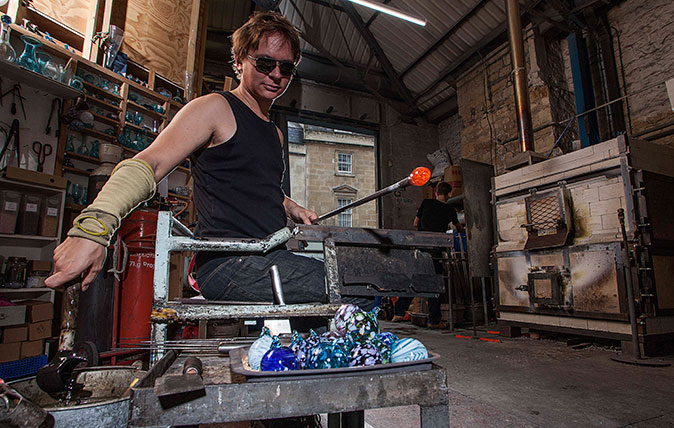

Manmade glass can be traced to 3,500BC, but, in the 1st century BC Phoenician glassworkers made a revolutionary discovery. Molten glass, they found, could be inflated, enabling them to hollow out glass vessels with air instead of shaping the interior by hand.
Recent decades have seen a revival of traditional glassblowing, mostly by artists producing one-off works generally termed ‘studio glass’. Decorative objects of a more practical nature, such as tableware, jewellery, Christmas-tree baubles and stained-glass panels, are produced by Bath Aqua Glass.
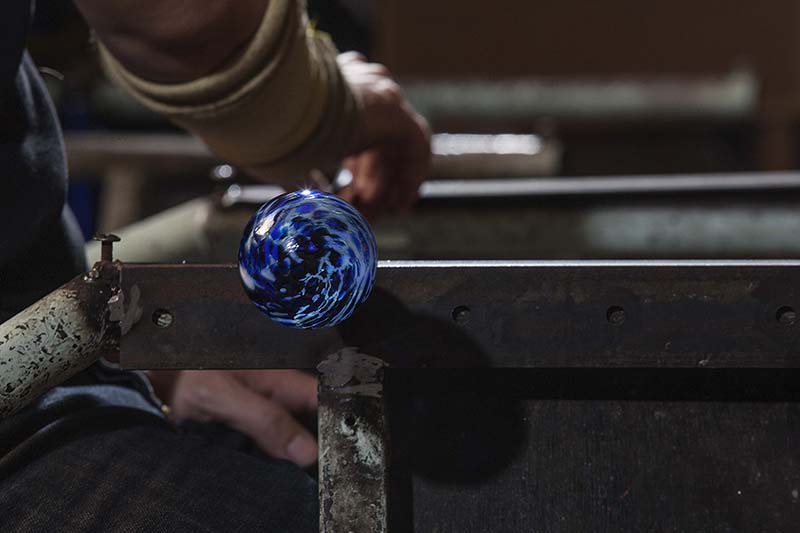
The company was founded in 1996 to continue the skills of making free-blown (as opposed to mould-blown) glass objects. It now has two shops and runs daily studio demonstrations, many of its designs reflecting the influence of Roman vessels.
Senior glassblower Ian Shearman manages the ‘hot floor’. Taking a pre-heated blowing iron or ‘pontil’ – hence ‘plenty of irons in the fire’ (although, nowadays, they’re actually stainless steel) – he dips it into a pot of molten glass in a furnace and extracts a blob known as a ‘gather’.
Turning it all the while, he adds coloured glass chips and powder before placing it into a hotter furnace known as a ‘glory hole’ to melt the colours into the glass.
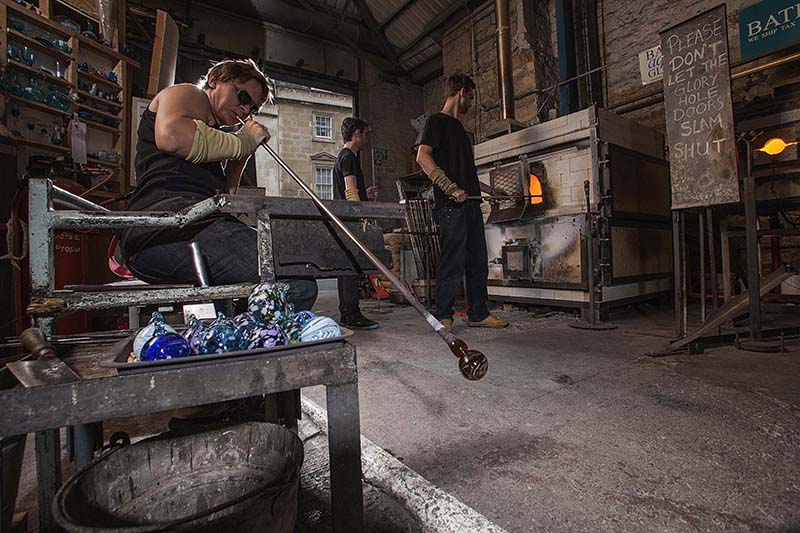
He then shapes the piece using breath, tools and gravity. The glass is cooled slowly, in a kiln known as a ‘lehr’, to avoid cracking .
Maker and assistants Harry Wet and Peter Hamblin work in balletic harmony as they gather, place and shape this magical material.
Sign up for the Country Life Newsletter
Exquisite houses, the beauty of Nature, and how to get the most from your life, straight to your inbox.
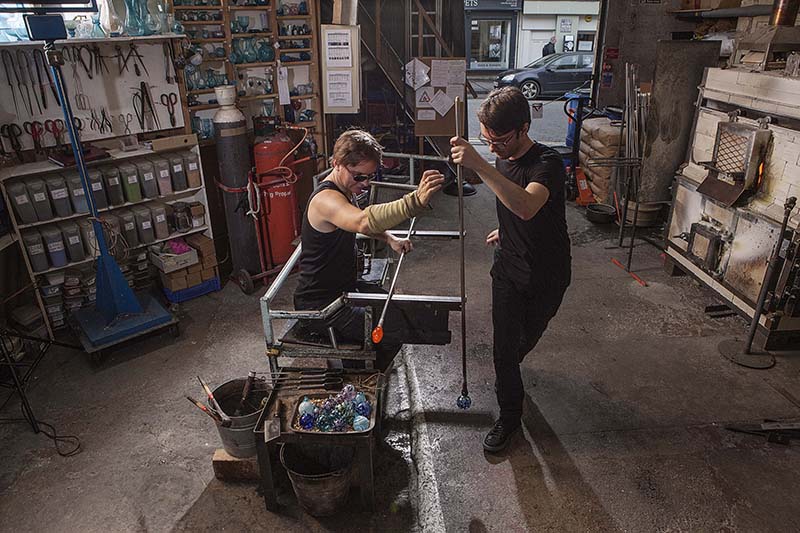
‘Good teamwork is essential,’ says Mr Shearman. When adding parts, your assistant needs to bring you the right bit at the right time.
‘If you’re making a goblet and halfway through something goes wrong, often you simply can’t fix it — you just have to sling it into the bosh bucket for recycling and start again.’
Find out more about Ian Shearman and his team at www.bathaquaglass.com
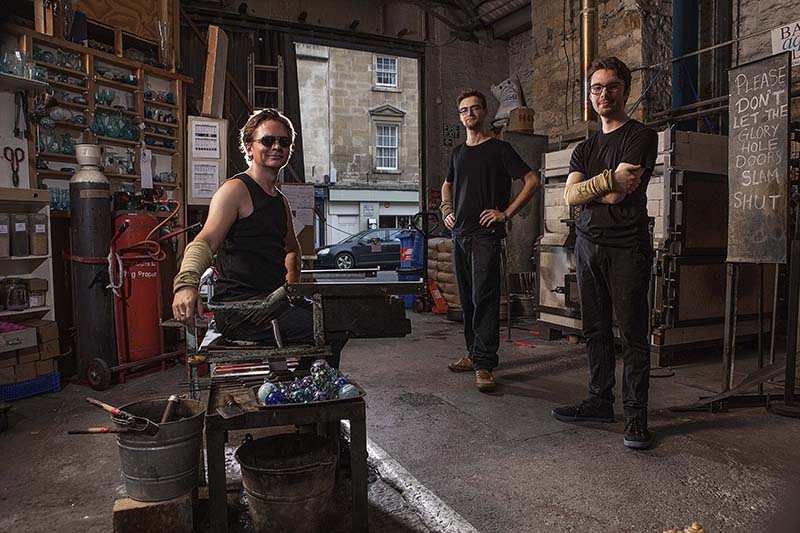
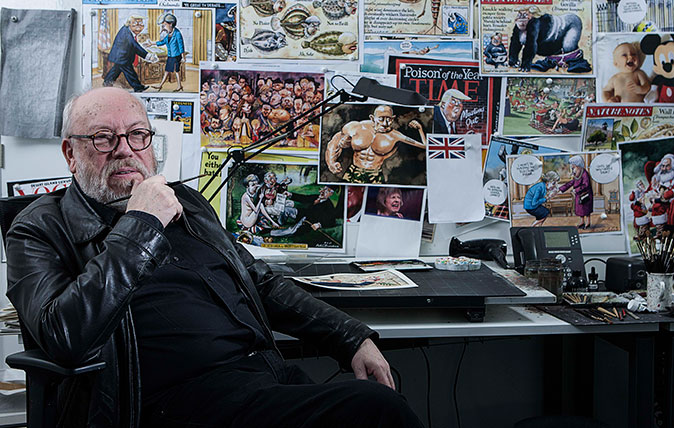
The political cartoonist: 'Politicians hate how I depict them, but they'd hate it even more if I ignored them'
Peter Brookes, political cartoonist at The Times, is a savage commentator and the spiritual successor to the likes of Gillray
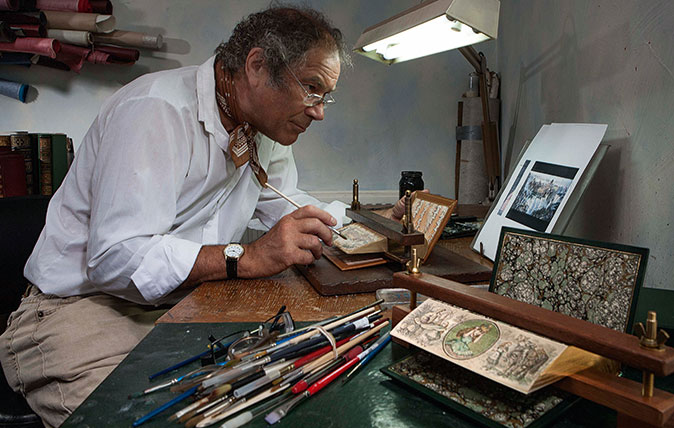
Credit: Martin Frost photographed by Richard Cannon ©Country Life
The disappearing art of fore-edge painting, and the last man in Britain still doing it for a living
Giles Kime profiles the amazing Martin Frost, the last commercial fore-edge painter in the country.

Hunting lodge designed by Lutyens’s protégé comes to the market
There’s treasure in them thar hills.
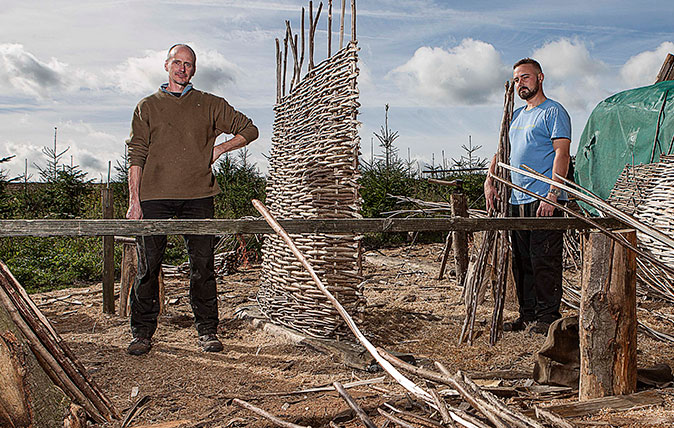
The traditional fence-maker who has been turning out wattle hurdles for nearly 25 years
Traditional hazel fencing – or 'wattle hurdles' as they're properly known – is as popular as ever, a beautiful hand-made
Mary Miers is a hugely experienced writer on art and architecture, and a former Fine Arts Editor of Country Life. Mary joined the team after running Scotland’s Buildings at Risk Register. She lived in 15 different homes across several countries while she was growing up, and for a while commuted to London from Scotland each week. She is also the author of seven books.
-
 Designer's Room: A solid oak French kitchen that's been cleverly engineered to last
Designer's Room: A solid oak French kitchen that's been cleverly engineered to lastKitchen and joinery specialist Artichoke had several clever tricks to deal with the fact that natural wood expands and contracts.
By Amelia Thorpe
-
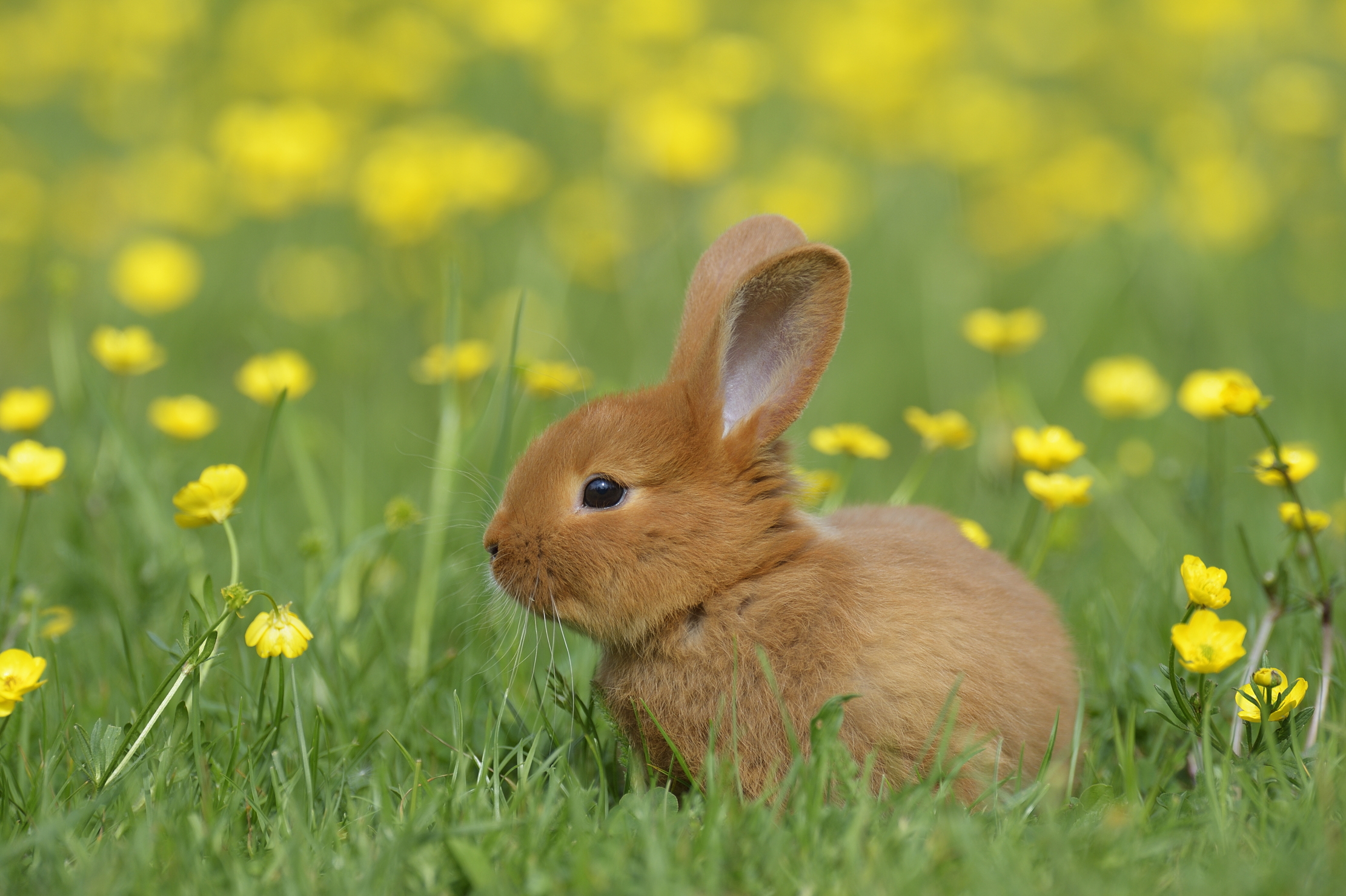 Chocolate eggs, bunnies and the Resurrection: Country Life Quiz of the Day, April 18, 2025
Chocolate eggs, bunnies and the Resurrection: Country Life Quiz of the Day, April 18, 2025Friday's quiz is an Easter special.
By James Fisher
-
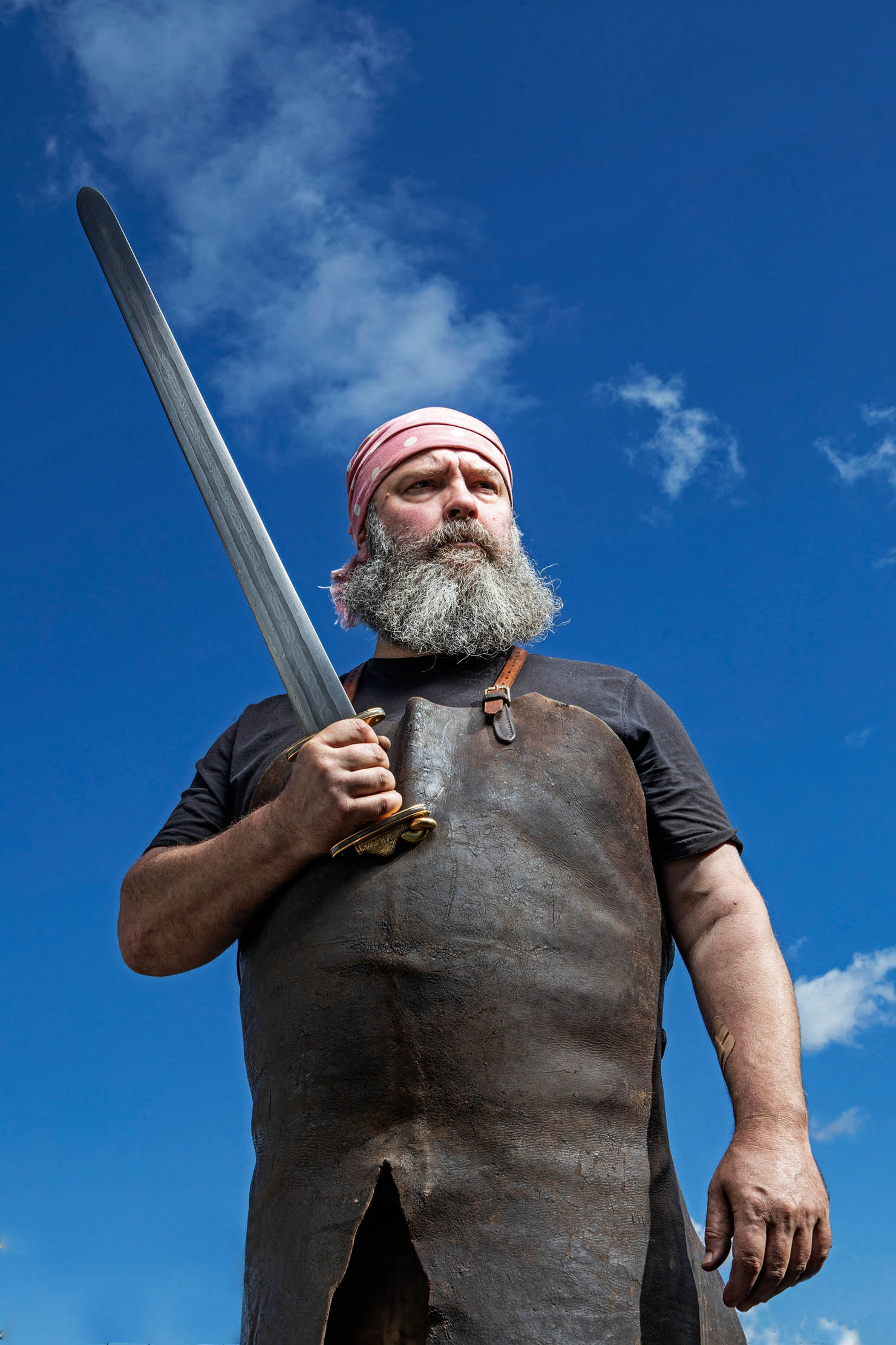 The 21st century sword maker: 'There’s something appealing about getting metal hot and smacking it with a hammer'
The 21st century sword maker: 'There’s something appealing about getting metal hot and smacking it with a hammer'Practising ancient techniques to craft modern heirlooms, bladesmith Owen Bush handmakes both decorative and practical knives or weaponry, each with their own personalities, says Claire Jackson — with some of his swords celebrities in their own right. Photographs by Richard Cannon for Country Life.
By Claire Jackson
-
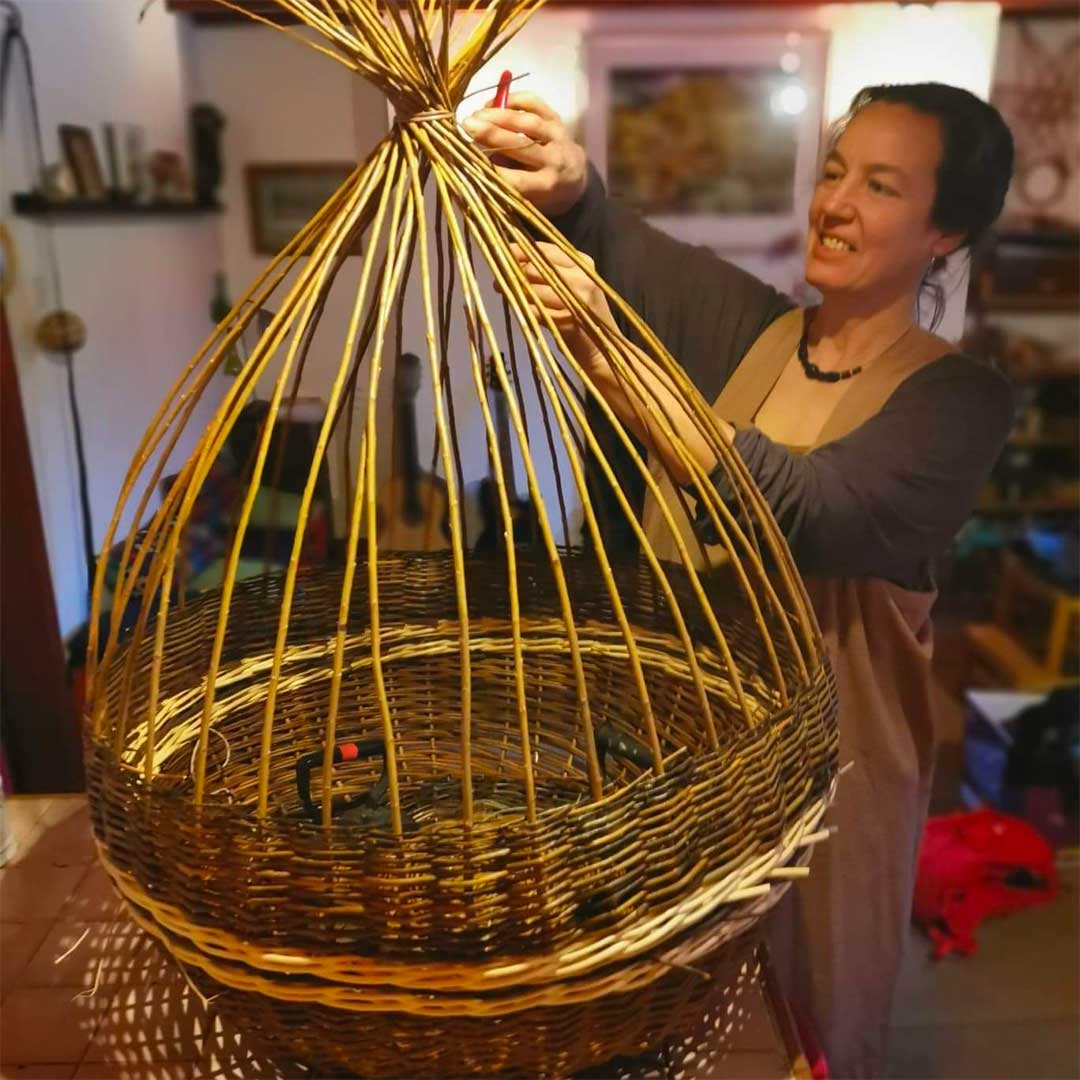 The secrets of the basket-maker: 'With a basket, you watch it grow before your very eyes'
The secrets of the basket-maker: 'With a basket, you watch it grow before your very eyes'Anna Stickland has woven a new career as a basket-maker; she spoke to Nick Hammond.
By Country Life
-
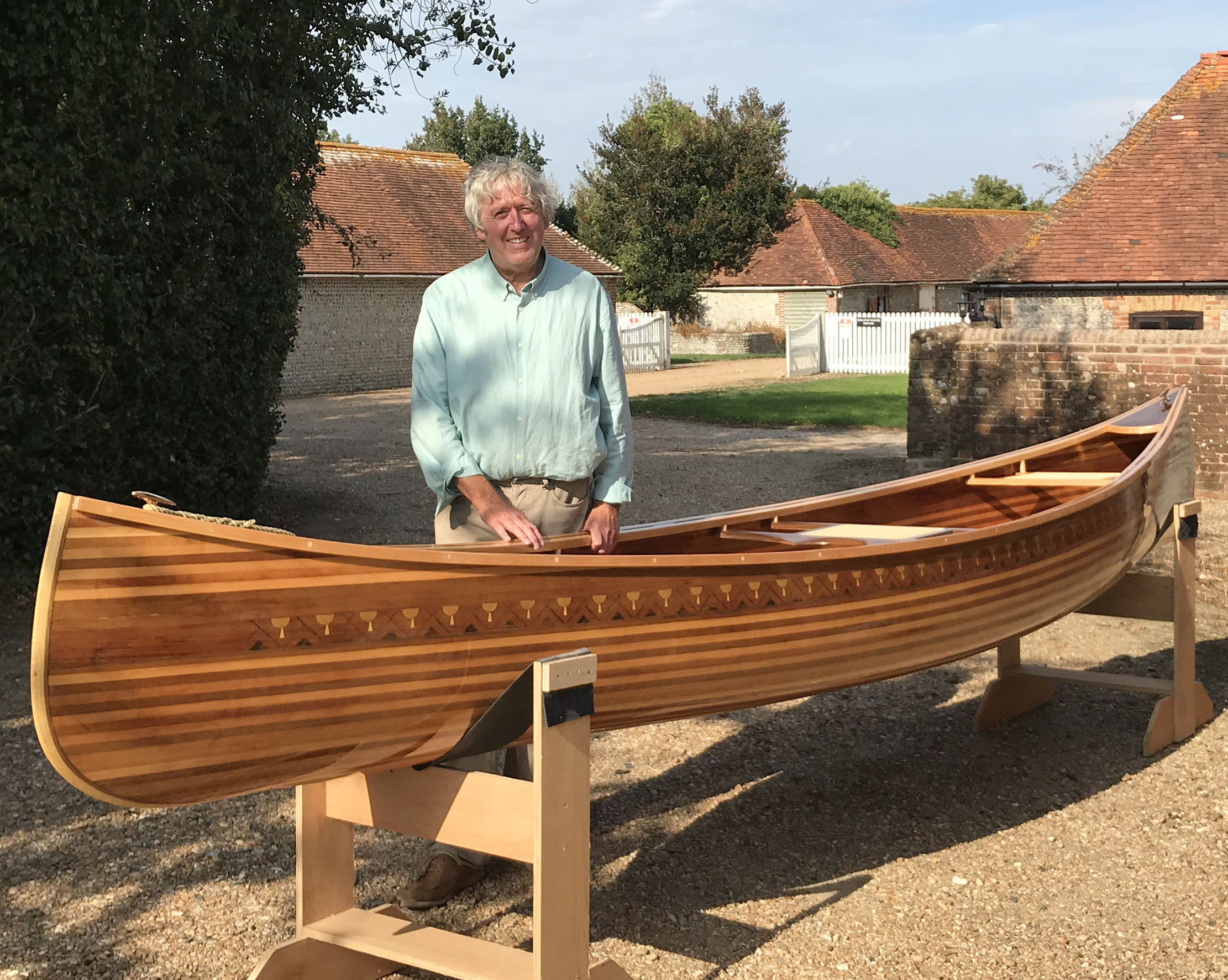 Where I Work: Huw Edwards-Jones, master craftsman and canoe maker
Where I Work: Huw Edwards-Jones, master craftsman and canoe makerThe ups and downs of 2020 didn't see Huw Edwards-Jones change where he worked, but it did change what he did: he's used the time to switch from creating beautiful hand-made furniture to spectacularly beautiful canoes. He spoke to Toby Keel.
By Toby Keel
-
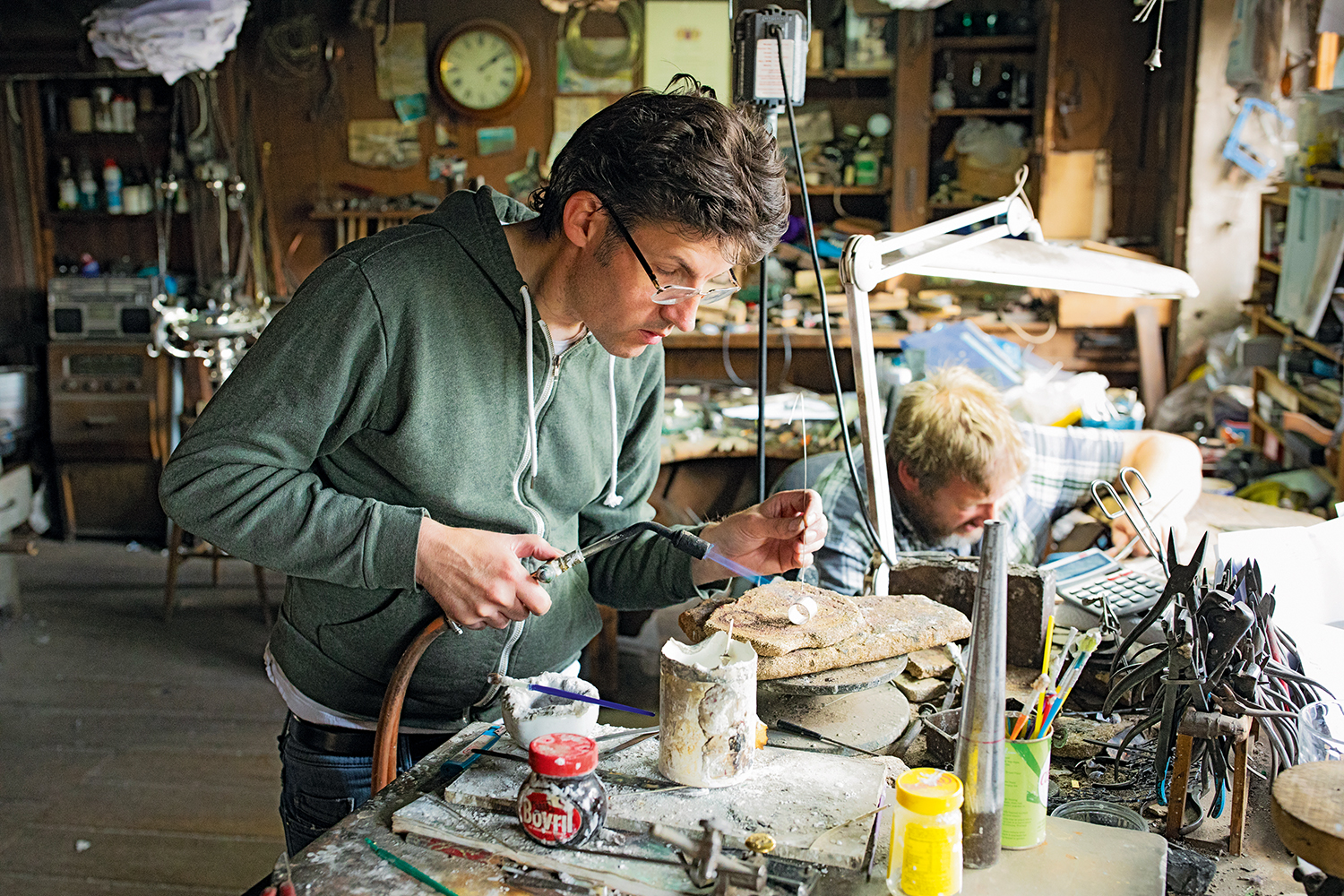 In Focus — The Cotswolds silversmith: 'We make beautiful works of art to last for hundreds of years'
In Focus — The Cotswolds silversmith: 'We make beautiful works of art to last for hundreds of years'Tucked away in an old Cotswolds silk mill, expert craftsmen harness a century of expertise to raise, planish and finish fine gold and silverware. Jeremy Flint visits Hart’s of Chipping Campden.
By Country Life
-
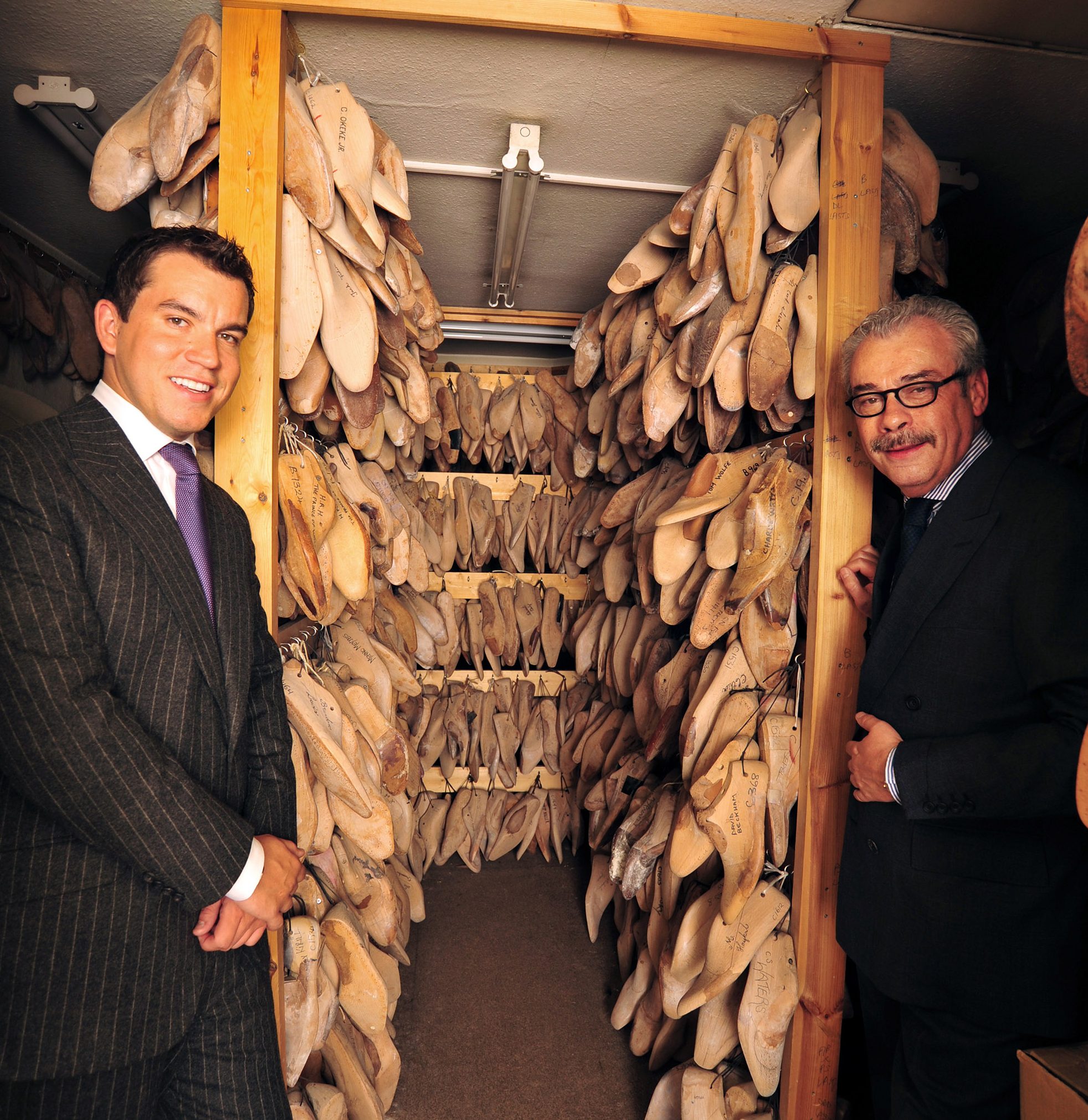 The master shoemakers who shod Churchill: 'Demand is through the roof, but it takes six to eight months to make a pair'
The master shoemakers who shod Churchill: 'Demand is through the roof, but it takes six to eight months to make a pair'The co-owners of bespoke shoe shop George Cleverley, father and son George Glasgow Snr and George Glasgow Jnr, talk to Hetty Lintell.
By Hetty Lintell
-
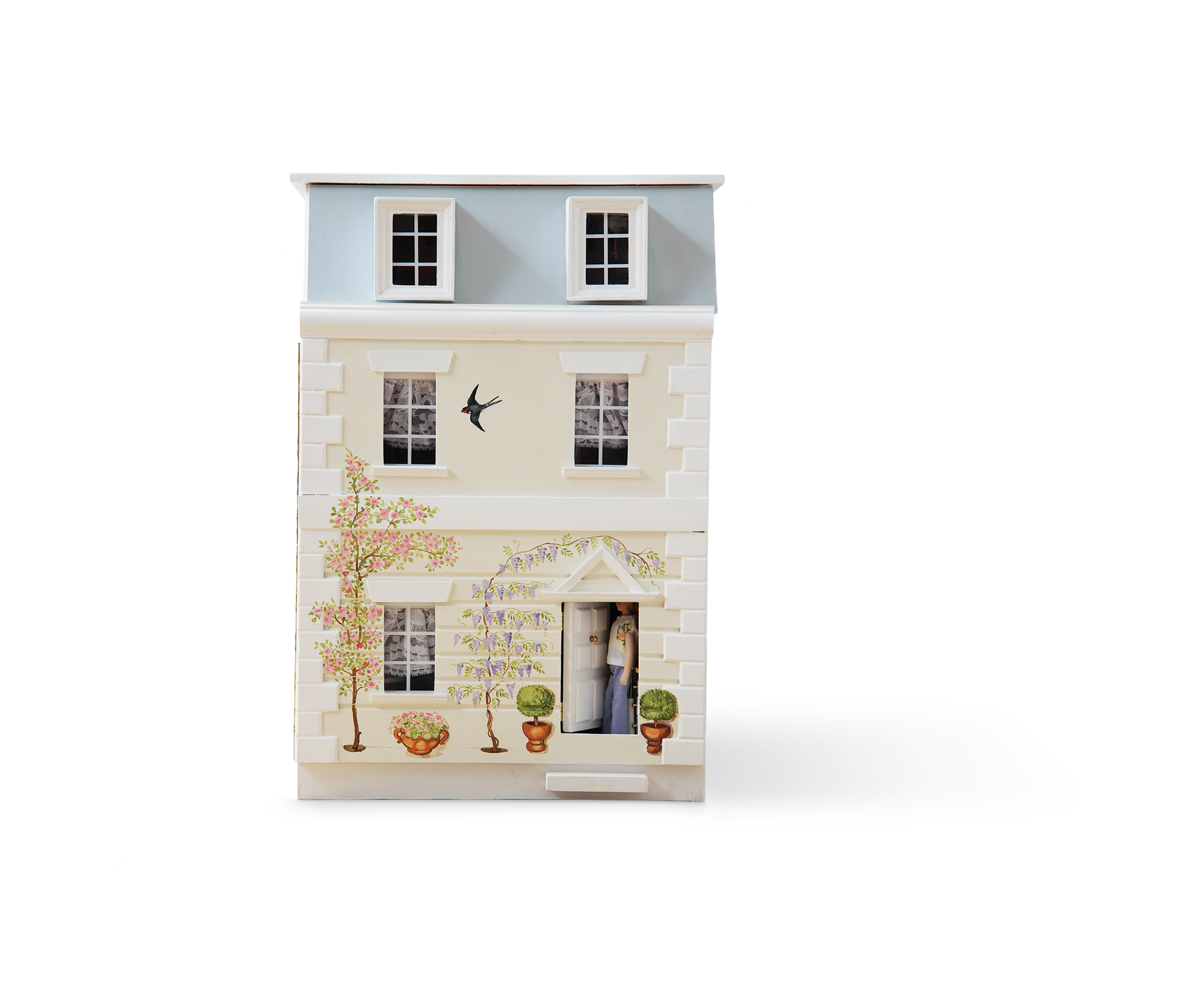 The dolls' house-maker: 'This is a place to capture the dreams of children and adults alike'
The dolls' house-maker: 'This is a place to capture the dreams of children and adults alike'Dragons of Walton Street have been making beautiful dolls' houses for four decades, and the company is still run by Lucinda Croft, the daughter of the founder. She spoke to Hetty Lintell.
By Hetty Lintell
-
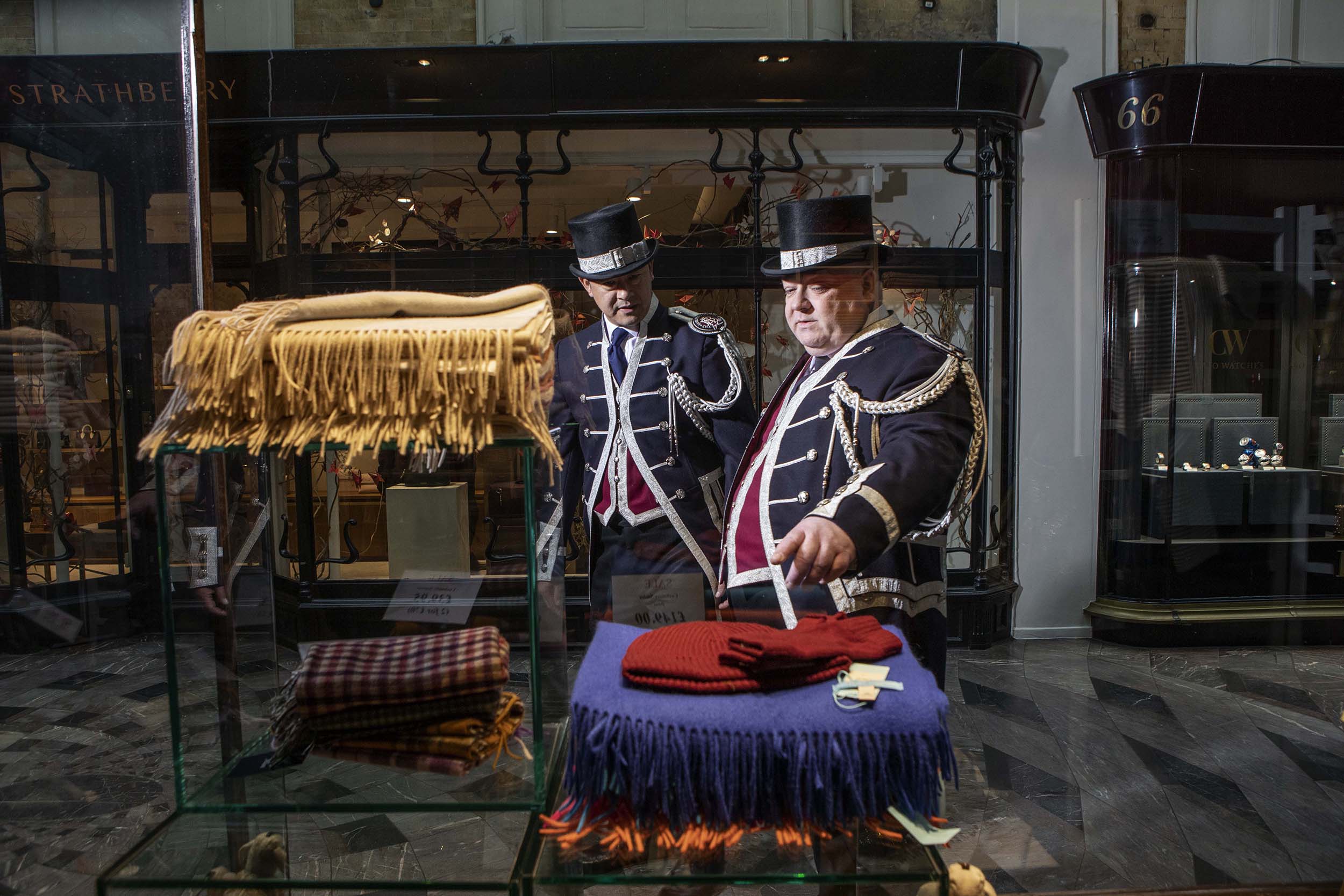 Meet the Beadles: The centuries-old private police force at Burlington Arcade, the world's swishest shopping mall
Meet the Beadles: The centuries-old private police force at Burlington Arcade, the world's swishest shopping mallThis week marked the 200th birthday of London’s Burlington Arcade. Adam Hay-Nicholls goes undercover with the Beadles, its private police force. With photographs by Richard Cannon.
By Country Life
-
 The bagpipe-maker: 'The older customers want me to make their pipes sharpish; they want to be sure they’re not dead before they get to play them!'
The bagpipe-maker: 'The older customers want me to make their pipes sharpish; they want to be sure they’re not dead before they get to play them!'Hours of intricate work are needed to craft a set of bagpipes. Kate Lovell spoke to bagpipe-maker Dave Shaw to find out how it's done.
By Country Life